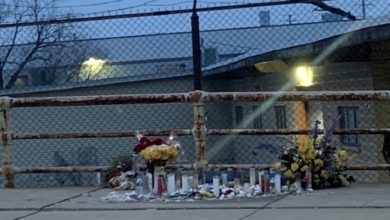June 4, 1977 marked the start of the Humboldt Park Uprising, in the predominantly working-class, Puerto Rican neighborhood on the West side of Chicago. Following a day of festivals at the Puerto Rican Day Parade, in which more than 3,000 people were in the park, a group of 100 police officers entered the park claiming violence was breaking out. As the police arrested one person suspected of violence, the picnickers tried to intervene on their behalf. Police officers began attacking everyone in the park, including families and children. They began firing shots as well.
Lt. Thomas Walton fired four shots at Julio Osorio, 26, hitting him in the back and killing him. During this same time Rafael Cruz, 25, was running away from the shooting and was shot in the back by Lt. Thomas Walton. The police initially claimed that Osorio and Cruz shot each other and Thomas Walton had nothing to do with it. Ballistics proved otherwise.
The killings set off a reaction from those in the park responding to the police murders. The community fought back with what they had — bricks and glass bottles — and began attacking police cars. The Chicago Police Department (CPD) moved in and arrested 119 people during the first day of the uprising. Those arrested were denied access to lawyers, interpreters, and phone calls, and some were even held in police vehicles overnight. The people occupied the park and surrounding streets for the next two days. There were 15 families that lost their homes due to fire. The fire department was told by police that they couldn’t protect them and they were on their own putting the fires out. One police officer was seen lighting a Puerto Rican flag on fire, and stepping on it in a show of racist power.
To this day, Humboldt Park residents are still targeted and harassed by the police presence in the neighborhood. In the following years there were even confirmed reports that Puerto Ricans were arrested in greater numbers, with police gag orders on the uprising. In wasn’t until 1979, that a declaration of no convictions of any of the police officers involved in the murders of Osorio and Cruz. In 1981 the families of Osorio and Cruz won a settlement from the city, but Thomas Walton continued working for CPD.
The Humboldt Park Uprising of 1977 is a piece of working-class history that must not be forgotten. This has gone on for too long. It has changed the outcome of laws around mass arrests and a consciousness among our class surrounding police violence. Again, this has gone on for too long. Our struggle for George Floyd is met with justified actions. It’s right to rebel! Justice for all victims of police terror.
For more information on the Humboldt Park Uprising, see the following sources: video interview, Wikipedia, New York Times archive article, UPI archive article, Humboldt Park 1977 movie.






